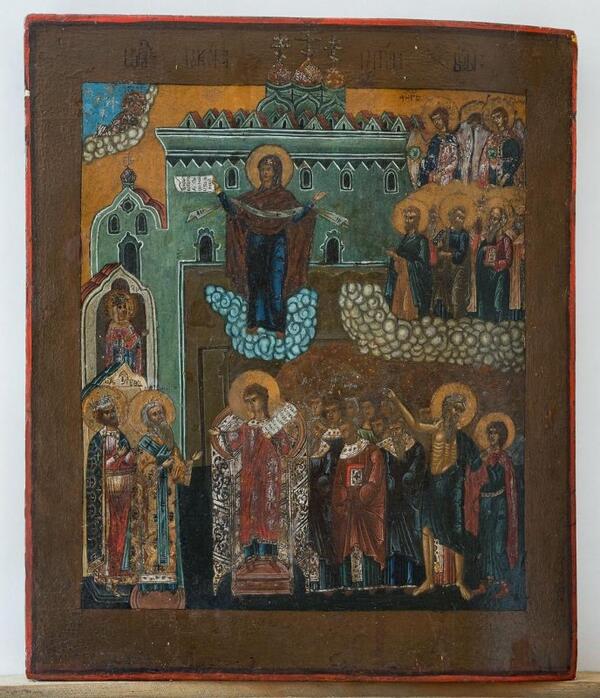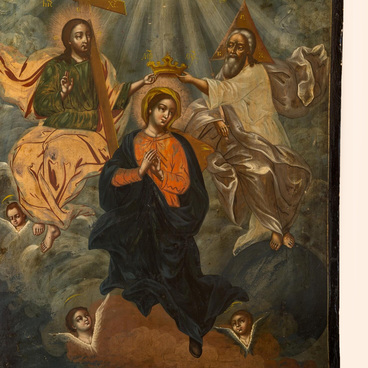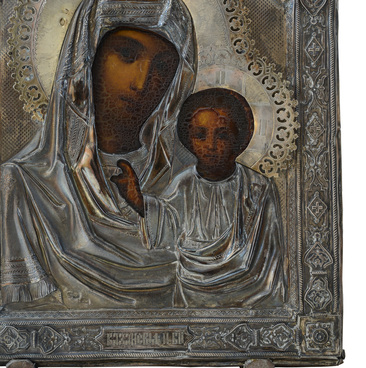The traditional
iconographic depiction of the “Intercession of the Theotokos” was based on “The
Life of St. Andrew the Blessed Fool-for-Christ”, written in the late 9th — early 10thcentury by Presbyter Nicephorus. Among other things,
the hagiography narrates the appearance of the Mother of God to Saint Andrew
and his disciple Epiphanius, which happened in the church of the Theotokos of
Blachernae. The church was full of worshippers, during the all-night vigil, St.
Andrew and Epiphanius saw the Mother of God and John the Baptist, John the
Apostle and other saints accompanying Her. The Mother of God knelt down and
prayed for a long time, after which She stood up and spread Her veil
(maphorion) over the people:
Intercession of the Most Holy Theotokos
And for a long time these wonderful men saw the veil spread over the people and radiating the glory of God like amber.
Saint Romanos the Melodist is depicted at the bottom of the icon. In his left hand he holds a scroll with the words of the festive hymn composed by him — the kontakion of the Nativity of Christ:
Today the Virgin gives birth to Him Who is above all being…
What does Saint Romanos have to do with the Feast of the Intercession? The answer is simple: the appearance of the Virgin to St. Andrew occurred on the day the Church commemorates Saint Romanos. The saint also served in the Blachernae Church and performed his kontakion in it for the first time during the divine service.
The priests and choristers of the church are depicted behind St. Romanos. The entire plot is depicted against the background of the Blachernae Church, in which the Mother of God appeared. The master added typical Russian architectural features to the famous Constantinople church with — kokoshniks (the keel-like exterior decorative elements) and onion domes.
Due to the predominance of dark shades of ocher, the icon looks rather dark, dim, non-festive, and even gloomy. This impression is enhanced by the drying oil that darkened over time. This icon was kept in one’s home, judging by its small size — 31 centimeters in height.
A variant of the “Intercession” type was developed in the Principality of Vladimir-Suzdal, possibly as early as the 12th century. In the same region, near Bogolyubovo, founded by Prince Andrew (Andrey), the oldest Church of the Intercession in Russia stands on the Nerl River. Some researchers believe that the Feast of the Intercession began to be celebrated by the Church thanks to the prince who fervently revered the Virgin.


